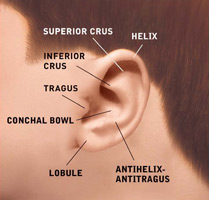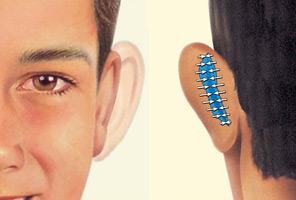OTOPLASTY
A DISTINCTIVELY DIFFERENT PRACTICE
EXPERIENCE EXTRAORDINARY
What is Otoplasty?
Corrective ear surgery, also known as otoplasty, is a procedure to help improve the shape, position, or proportion of the ear. The ear abnormality could have been present at birth or acquired during trauma. If protruding or disfigured ears bother you or your child, you may consider corrective ear surgery. Patients often report a high level of satisfaction with this procedure as it can greatly improve self-esteem.
Surgery can treat overly large ears (a condition called macrotia), protruding ears on one or both sides, and other ear abnormalities. The goals of surgery include creating a natural ear shape so that the ear appears balanced with the face and head. Children are good surgical candidates if they are relatively healthy, cooperative with instructions, five years old or older, and do not voice strong objections to surgery. Teenagers and adults are good surgical candidates if they are relatively healthy with an apparent deformity and realistic surgical expectations.
Corrective ear surgery, also known as otoplasty, is a procedure to help improve the shape, position, or proportion of the ear. The ear abnormality could have been present at birth or acquired during trauma. If protruding or disfigured ears bother you or your child, you may consider corrective ear surgery. Patients often report a high level of satisfaction with this procedure as it can greatly improve self-esteem.
Surgery can treat overly large ears (a condition called macrotia), protruding ears on one or both sides, and other ear abnormalities. The goals of surgery include creating a natural ear shape so that the ear appears balanced with the face and head. Children are good surgical candidates if they are relatively healthy, cooperative with instructions, five years old or older, and do not voice strong objections to surgery. Teenagers and adults are good surgical candidates if they are relatively healthy with an apparent deformity and realistic surgical expectations.
FAQ’s






